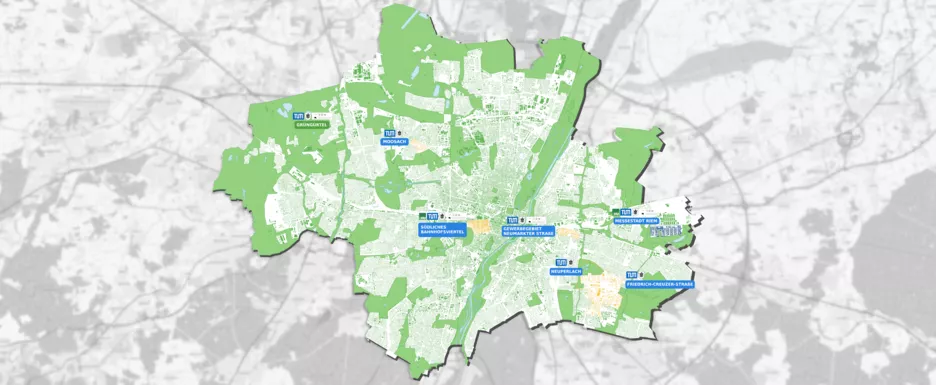
Moosach
The Moosach district is a heterogeneous neighborhood with different density and development structures. As part of an urban redevelopment, housing estates from the 1940s and 1950s are to be redensified and their surroundings upgraded. The Reallabor is characterized by a high proportion of green spaces and a high need for redevelopment of the buildings.

Heltauer Straße
North of the Trudering train station is the living lab "Heltauer Straße". The area is located in the "Trudering fresh air corridor", which runs along the Munich - Rosenheim railroad line. In view of the optimal connection to the public transport system and the high building density that is planned, the effects on the air exchange potential are of particular interest.

Southern Train Station District
The Bahnhofsviertel is one of the densest and busiest neighborhoods in Munich with many small stores, hotels, restaurants and offices. The cityscape is dominated by dense perimeter block development, where about 20,000 people work and 4,500 people live. The street space is largely ungreened and characterized by high traffic volumes. The only and at the same time bioclimatically most important area is the Nußbaumpark as well as the tree-lined Bavariaring at the edge of the adjacent Theresienwiese.

Neumarkter Straße commercial area
The Neumarkter Straße commercial area is located between the Leuchtenbergring and Berg am Laim S-Bahn stations, directly adjacent to residential areas and a landscape park. Interesting for the development of future images for a green, livable neighborhood is the change taking place, characterized by a move away of manufacturing small businesses and the settlement of larger building complexes from the service sector.

Messestadt Riem
At the beginning of the 1990s, a modern residential area was created on the former airport site on the eastern outskirts of Munich for more than 16,000 people from what is now more than 100 nationalities. With the planning model "compact, urban, green", a strongly greened and traffic-calmed street area and a large landscape park with a bathing lake in the south of the area were created, which also has a high bioclimatic significance.

Climate-Green belt
The green belt is a continuous band, covering an area of about 335sq.km.
Investigated areas include undeveloped open spaces on the outskirts of Munich, as well as transition areas to the neighbouring communities.
Since the area is mainly used for agriculture, the adjacent forests, heathlands and the partially renatured Isar are very popular recreation areas.

